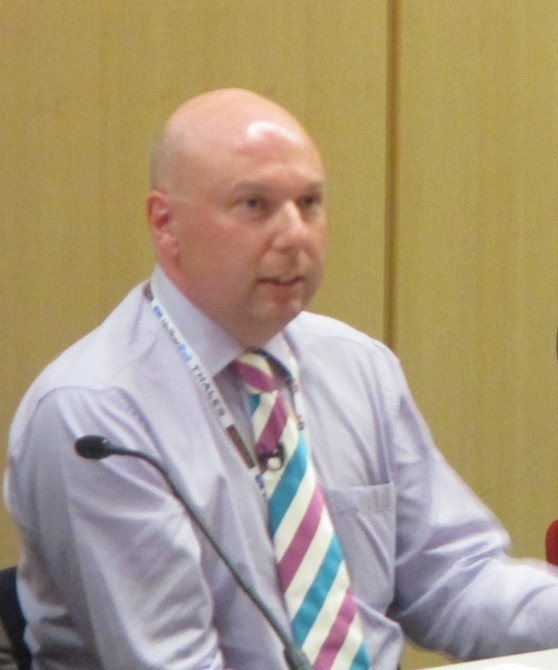19.06.15
Traction design blamed for Sheffield tram-train delays
Network Rail’s head of the delayed £60m tram-train pilot between Sheffield and Rotherham has admitted that design problems have affected the pace of work and the infrastructure picture “isn’t positive”.
 Speaking at a panel session at the UK Light Rail Conference in Nottingham yesterday, Simon Coulthard (pictured) said his team is “learning lessons the hard way” but that design and implementation works should be complete by about autumn next year.
Speaking at a panel session at the UK Light Rail Conference in Nottingham yesterday, Simon Coulthard (pictured) said his team is “learning lessons the hard way” but that design and implementation works should be complete by about autumn next year.
The original announcement said the project “will see tram-trains operating between the cities of Rotherham and Sheffield from 2015”, but this has been pushed to early 2017.
“There are a lot of reasons why it has taken us longer to do the design. It is true that we are learning lessons the hard way,” said Coulthard. “I still don’t quite understand why we’ve had three goes at traction power modelling and each time the model was giving us different answers about what the design of the traction power system should be.”
One positive note for the project is that the first unit is now complete and is going through testing in Valencia – it will arrive in the UK in November. The second unit is now in production and will be delivered in early 2016, and then the five other vehicles will be delivered throughout next year.

During a morning session at the conference, Paul Buchanan, partner at Volterra, gave a brief presentation on high-speed rail and multi-modal integration.
He suggested that transport helps generate economic growth in cities, but asked whether having high-speed stations outside cities, as suggested with the location in Sheffield at Meadowhall, was the correct way forward. Buchannan argued that the time saved by using a high-speed train could then be lost by having to use another mode of transport to get into a city centre.
But former under-secretary of state for transport Norman Baker said there is a strong case for having light rail at high-speed rail stations, as he believes more people will switch from ‘rail to rail’ than ‘rail to bus’. He also believes HS2 needs to be “more imaginative” in how it integrates with light rail.
In another interesting session, Dr Nick Mallinson introduced the work being done by Warwick Manufacturing Group (WMG), an academic department of the University of Warwick, as part of the Revolution Very Light Rail (VLR) Consortium to develop ultra light rail vehicles, which feature two lightweight self-propelled bogies. The vehicles will use a modular lightweight segmented body structure and a full powertrain is to be assembled and tested in September this year.
WMG, which only recently ventured into rail, is also working with Dudley Metropolitan Borough Council to develop a VLR Innovation Centre to be located at Castle Hill in Dudley.
Mark Barry, an adviser to the Welsh government, also gave an update on the potential development of the Cardiff Metro. He said that all transport options, including light rail, are being considered. However, Barry noted that despite the political ambition for the project unless the various institutions surrounding the potential are aligned then “we won’t have a project”.
Full coverage of the various sessions from the show will be in the June/July edition of RTM.
Tell us what you think – have your say below, or email us directly at [email protected]